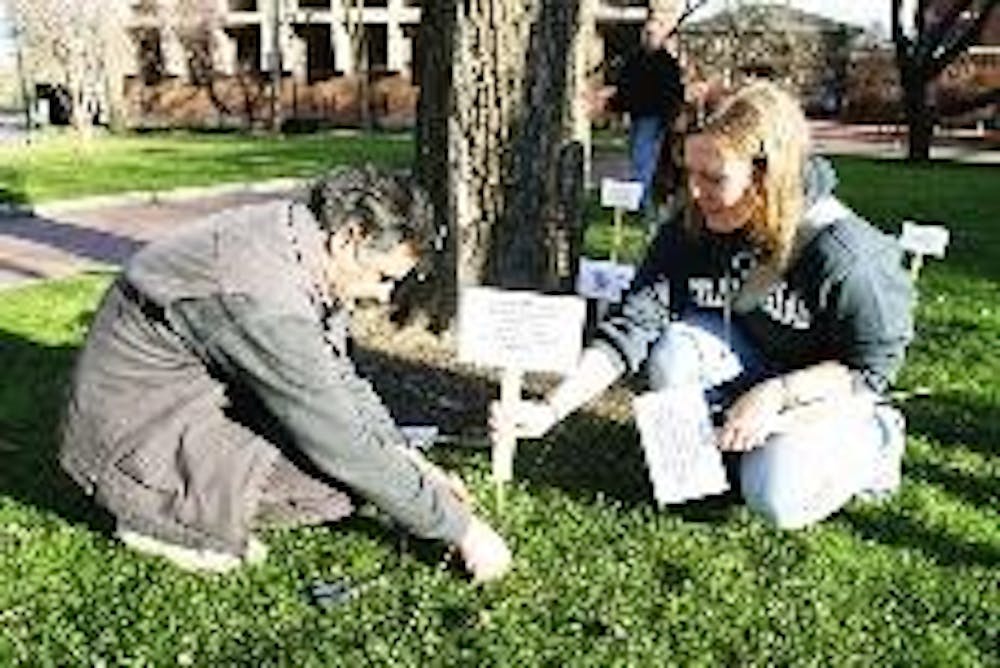Across from the Button sculpture on College Green, a simple white placard bears a somber message: "In Loving Memory of Lena Ali Hera. She died in Al Rashiddia on 7 Apr. 2003, age 5. Tank Attack."
The signpost is one of some 500 that will dot the Green for the next week as part of a symbolic graveyard that Penn anti-war groups have installed to draw attention to the large number of Iraq War civilian deaths.
Each placard that was put up yesterday afternoon represents 1,000 deaths from the war in Iraq. While three signposts stand for the 3,000 American soldiers that have died, the rest are supposed to represent an estimated 500,000 Iraqi deaths.
Student members of Penn Against War, Penn Faculty & Staff Against War on Iraq and the Philadelphia chapter of leftist group World Can't Wait worked together to set up the installation, which will stay on College Green until next Tuesday.
Though estimates of the Iraqi death toll have varied from 100,000 to about 600,000, depending on the source, group organizers said they decided on 500,000 because several anti-war groups have agreed that it is a realistic figure.
History Ph.D. candidate and Penn Against War member Rob Goldberg said the protest's goal is to emphasize Iraqi casualties, which he said often go unnoticed in American mainstream media.
"Most of what we talk about is 'our,' and we say little about 'their,'" Goldberg said.
As students passed by the new installation yesterday evening, some kept a brisk pace while others stopped to take a closer look.
Wharton freshman Nikhil Kumar said, "I think people will stop and look at least once. They did for the Jesus tent, so I hope they stop to look at this."
He said he could imagine some people being unhappy with the installation's prominent placement on Penn's campus, but added that, "if nothing else, this will spur some conversation."
The group organizers arranged to use the space through the staff of Perelman Quadrangle, which allots space to Penn student groups upon request.
No University funding was used to set up the protest, said Felicity Paxton, an organizer of the installation and a faculty fellow in the Contemporary Writing and Women's Studies programs.
She said it cost about $400.
Organizers said they came up with the idea to set up a symbolic graveyard during a student-sponsored teach-in in November.
Paxton said she had seen and heard of similar graveyards throughout the nation - and even nearby in downtown Philadelphia.
In setting up the installation, Paxton said the group chose to focus on Iraqi children in order to give the death-toll estimates a more human quality.
She added that she hopes the installation will be visually arresting enough to grab the attention of many members of the Penn community.
"You cannot walk past it without stopping and thinking," she said.



